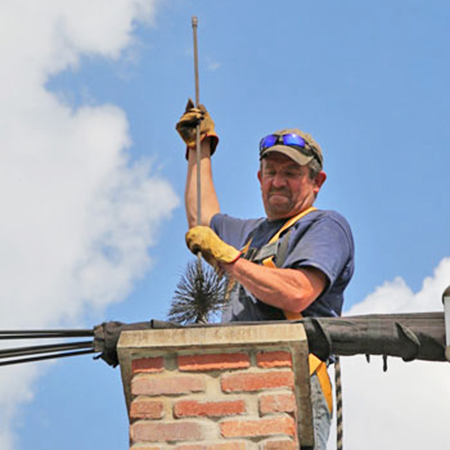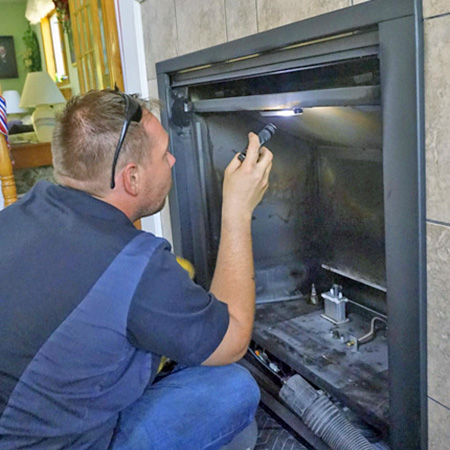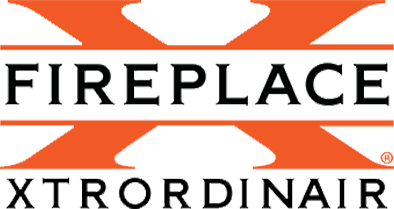Why You Shouldn’t Delay Your Annual Chimney Inspection
 The chimney performs one of the most vital safety functions yet is often overlooked during routine home maintenance. For many homeowners that use the fireplace only a few times a year, having a chimney inspection isn’t a top priority. But this assumption can be dangerous. There may be excessive creosote, weather-related damage, water leaks, and other problems that are not easily noticeable. An annual inspection is the only way to evaluate the condition of your chimney and ensure it’s safe for use.
The chimney performs one of the most vital safety functions yet is often overlooked during routine home maintenance. For many homeowners that use the fireplace only a few times a year, having a chimney inspection isn’t a top priority. But this assumption can be dangerous. There may be excessive creosote, weather-related damage, water leaks, and other problems that are not easily noticeable. An annual inspection is the only way to evaluate the condition of your chimney and ensure it’s safe for use.
Creosote
Even if you don’t use your fireplace very often, contaminants including creosote continue to accumulate. Burning wood produces several byproducts, one of which is creosote. Gas also produces creosote but in smaller quantities. Creosote is highly flammable in excessive amounts. And if it continues building up inside the flue, it can ignite and spark a fire. A chimney fire can quickly spread to combustible building materials engulfing an entire house in less than three minutes. During an annual chimney inspection, a professional Chimney Sweep will examine the flue for creosote. If it is excessive, the chimney sweep will recommend professional cleaning. The Chimney Safe ty Institute of America (CSIA) considers creosote hazardous when its accumulation is 1/8″ or more.
Flue Obstructions
Chimneys with an exposed flue due to a missing or broken chimney cap are prone to obstructions. For instance, wind can blow leaves, twigs, and other debris inside clogging the flue. Also, small animals such as birds and rodents can enter and build nests. These obstructions can hinder the ventilation of smoke and toxic fumes, causing them to back-up into your home. And it can negatively impact your indoor air quality and health. It can even cause carbon monoxide poisoning.
Structural Problems
 Weather conditions can impact the chimney, especially in climates with extreme swings in temperature. For example, the freeze-thaw effect can cause cracks in the masonry. There may also be damage to the chimney crown, mortar, flashing, flue liner, and other components. The presence of cracks can allow moisture, smoke, and carbon monoxide gas to seep into your home. In addition to increasing the risk of fire and health issues, your fireplace may be unsafe for use. Severe structural problems will diminish the structural integrity of the chimney and eventually lead to a total collapse. The sooner you catch fundamental structural issues, the better.
Weather conditions can impact the chimney, especially in climates with extreme swings in temperature. For example, the freeze-thaw effect can cause cracks in the masonry. There may also be damage to the chimney crown, mortar, flashing, flue liner, and other components. The presence of cracks can allow moisture, smoke, and carbon monoxide gas to seep into your home. In addition to increasing the risk of fire and health issues, your fireplace may be unsafe for use. Severe structural problems will diminish the structural integrity of the chimney and eventually lead to a total collapse. The sooner you catch fundamental structural issues, the better.
The National Fireplace Institute and fire safety experts strongly recommend homeowners have annual chimney inspections. It should be routine maintenance for any homeowner with solid or liquid-fuel heating appliances, whether they are functional or not. When you consider the cost of a basic level-I chimney inspection is around $300 or less, it is a minimal price to pay for increasing the safety of your home and family.
Make sure you hire a chimney professional who has the experience and qualifications to perform inspections. A well-trained chimney sweep has the professional tools and equipment to inspect and diagnose any problem that may go unnoticed by an untrained homeowner.




















